Driving in Heavy Rain- 12 Essential Tips you NEED
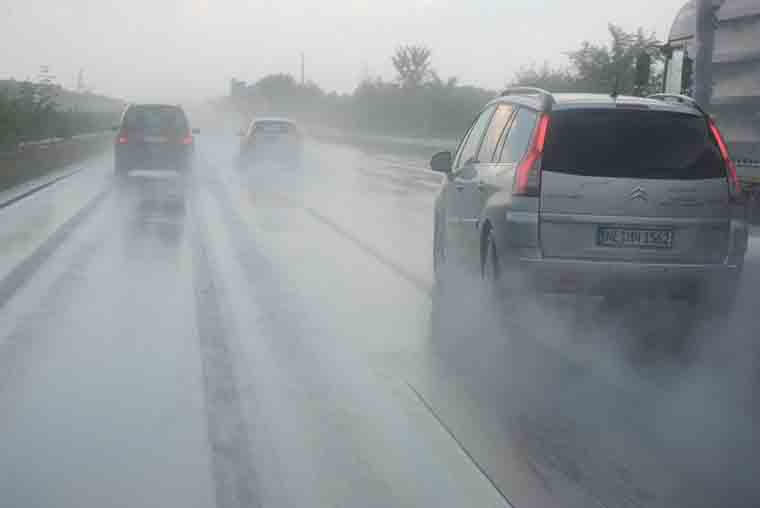
Finding yourself driving in rain, especially heavy rain, can be daunting- particularly if you’re in a large vehicle like a motorhome. Here are some expert tips to help you stay safe and in control on your road trip.
*We work hard to make this the best motorhome travel blog and road trip website possible, full of helpful content for you. The website is supported by our readers, so if you buy through links on this site we may earn a commission- at no extra cost to you. All opinions remain our own.
If you find this post useful, you can also treat us to a coffee – we promise to enjoy it while creating more useful content like this- we might even indulge in a biscuit (or two!)
JUMP AHEAD TO...
Driving in Heavy Rain- the problem
Be honest- do you slow down much while driving in the rain? Do you change your driving style at all?
Do you leave extra room for braking, even if it’s not raining that hard? Or hold the steering wheel more carefully?
Apparently, we automatically adjust our expectations and driving style in snow, fog or ice, but not so much in rain.
A few years ago, Highways England launched a “Rain Kills” warning to motorists in the hope to reduce these sad statistics.
How dangerous is driving in the rain?
According to Highways England, both pedestrians and other road users are 30 times more likely to be killed or injured on the roads when it is raining, rather than in snow or icy conditions.
Most of you reading this will already have your driving licence (and probably had it for a while!) We’ve all driven in wet weather conditions and (hopefully!) stayed unscathed. After all, a lot of this is common sense and being in control of the vehicle at all times.
But it never hurts to have a refresher on driving in the rain safety tips- ESPECIALLY if you are going to be driving a bigger vehicle than usual (like a motorhome…)
How much slower should you drive in the rain?
Even doing the speed limit can be dangerous in rain, especially very heavy rain or even after periods of wet weather, when there could be large puddles and deep water on the road.
The key thing is how much space you leave between you and the vehicle in front.
Stopping distances increase substantially (over twice as long) when the road surface is wet- that’s assuming you can stop and the car doesn’t just aquaplane if you brake too hard.
There is no hard or fast rule saying how much slower you should drive in the rain. Some countries, like France, have two speed limits on their major motorways- one for normal weather and one for rainy conditions. (130km vs 110km/ hour)
Driving in the rain safety tips- before you set off
The first step to staying safe on the roadways is to understand and plan for upcoming weather conditions. This helps you forecast weather conditions for your journey, allowing you to plan ahead.
For example, if you know in advance you will be driving in heavy rain, you can make sure to:
- have your windscreen wiper blades replaced with new blades
- have your windshield wiper fluid upgraded to one which naturally aids your windshield in repelling water.
- Check tyres for adequate tread depth (and find out if you need winter tyres fitted)
- Check tyre pressure is correct- this will help with friction on the road.
- Occasionally, damp causes problems, especially in older vehicles. Check your electrical systems and ensure all vehicle lights are working: headlights, brake lights (tail lights), indicators, fog lights and hazard lights
(We all know we should be doing that before every trip anyway… right? Don’t rely on a clever vehicle system to tell you when a bulb is out- go check them manually before your next road trip.)
How to Stay Safe When Driving in Heavy Rain
I asked Richard Jackson, from WorldWeatherOnline to give us his top tips for driving safely in rain.
It can be hard work driving in heavy rain, especially if you are travelling in a new location. Unknown roadways, sudden curves, reduced field of vision and other hazards can be a recipe for disaster for those unprepared and not driving sensibly for the weather.
There are several safety precautions which should be observed, even when driving in light rain. These are things you can do to ensure you and your passenger’s safety during daytime or at night.
In the event that you encounter bad weather while driving, remember these safety tips:
- Use your headlights and your windshield wipers. Not only will using these help you to see better but having your headlights on will make you more visible to other drivers.
- Drive more slowly than usual. No matter what the speed limit sign says, avoid high-speed driving and reduce the car’s speed until you are comfortable. This will also keep you from hydroplaning on any standing water you may come across.
- Leave lots of braking room between you and the car in front of you. When we were first learning to drive, we were always aware of the “one car length” rule. As we get more confident, we often let this lapse. During rain, it is recommended to leave extra space. If you’re driving a motorhome, leave even more space.
- Do not slam on your brakes. This is another way to skid across the road, or hydroplane. You can lose control of your car in this situation and end up in an accident. Instead, press the brake pedal firmly but steadily.
- Try and avoid standing water– this is the easiest way to avoid aquaplaning. Try and follow the ‘tracks’ of the vehicle ahead of you. (Just out of interest- hydroplaning & aquaplaning are exactly the same thing- skidding across the top of water in a terrifying and not-very-controllable way.)
- If you do hydroplane, react calmly. Do not slam on your brakes or yank the wheel. Instead, come off the accelerator and try to carefully yet firmly keep your car headed in the direction it is supposed to go.
- Use built-in ventilation options (like air conditioning or heater vents on cold) to de-fog your windows. If you cannot see, pull over to avoid an accident.
- Engage your brain. We often behave subconsciously, especially in areas where we are comfortable. If you are entering risky weather, use common sense and take care to be alert of your surroundings and aware of the choices you make while driving.
- Do not use cruise control. If you accidentally hydroplane, cruise control will make the car go faster. It is best to be in control of as much of the car as you can during rainy weather
- Take extra precautions when merging. Your visibility will be more limited, so make use of all your mirrors and be sure to check over your shoulder. If someone is in the car with you, they can help look for cars. Clearly signal before you move over.
- Check and check AGAIN for cyclists and motorcyclists. They are easily hidden by rain spray. Make sure you indicate clearly and wait a couple of seconds before you change lanes.
- Don’t use your mobile phone while driving. If there are road closures, pull over to check your navigation.
- If your car does breakdown, pull as far off the side of the road as possible and use your hazard lights. But be aware you could be very hard to see, so it’s best to get out of the vehicle as quickly as possible if safe to do so.
Staying Safe While Driving in the Rain at Night
Here are some extra tips to help you stay safe if you are driving in heavy rain during the night:
- Give large trucks or buses extra space. If you follow them too closely, you will get caught in the wake of their tyres. All the water splashing up off the road will greatly decrease your visibility.
- Be aware that roads will have a glare at night and may affect your visibility. Slow down when approaching oncoming vehicles, as the glare from their lights will also decrease your visibility.
- If there’s a storm with lightning, keep in mind that you will feel temporarily blinded by these lights and adjust your speed accordingly.
- Never drive beyond where you can see. A curve or a hidden puddle may spell disaster, so always be looking ahead of where you are.

Renting a Vehicle for Your Travels
Thinking of renting a motorhome or car for your next road trip?
It’s a brilliant idea for a holiday (here are 12 PERFECT road trip destination ideas in Europe), but be sure to check the condition of the vehicle when you collect it.
If you will be motorhoming in winter (and not somewhere sunny like these 7 warmest places in mainland Spain!) be sure that your vehicle comes with appropriate winter tyres. If you are in a car, make sure you know if you have traction control or not.
READ MORE: 10 EPIC UK winter road trips you’ll LOVE
Even in summer, if heavy rains are forecast, skip the sports car and go with something more practical. Also be sure to discuss with the rental place the condition of wiper blades, headlights and other attributes that may aid you in navigating safely through heavy downpours.
Also, make sure you have adequate trip protection for your next trip to ensure against damage or accidents.
RELATED: France new winter tyre law- does your vehicle comply?
No matter whether you’re renting a vehicle or taking your own, I hope these driving tips have helped you feel more confident to drive in rainy conditions.
If you remember nothing else, remember to slow down and turn your lights on. If in doubt, and if the rain is really heavy, pull over somewhere safe and wait it out. There’s no shame in being cautious if it helps prevent an accident.
If you aren’t going to be using your motorhome or camper during winter, please remember to prepare it for winter storage to avoid damage which insurance companies may not cover. See our motorhome winter storage checklist here.
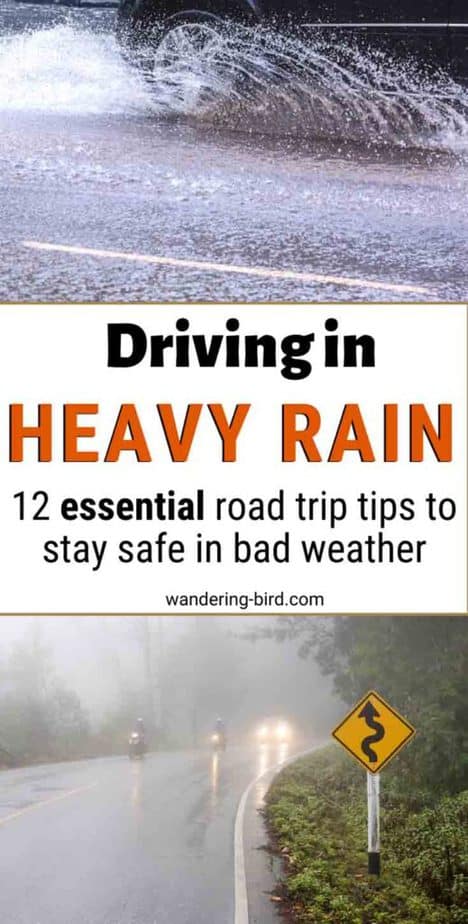

Kat never planned to buy a motorhome. She also never planned to quit her job as an air traffic controller, go touring around Europe in said motorhome, start one of the UK’s largest motorhome travel websites… or get a cocker spaniel.
Find out how she went from stuck in the rat race to being a digital nomad and inspiring thousands of people to have their own epic adventures here.
If you’d like to connect with Kat, send her an email or follow her adventures on social media.


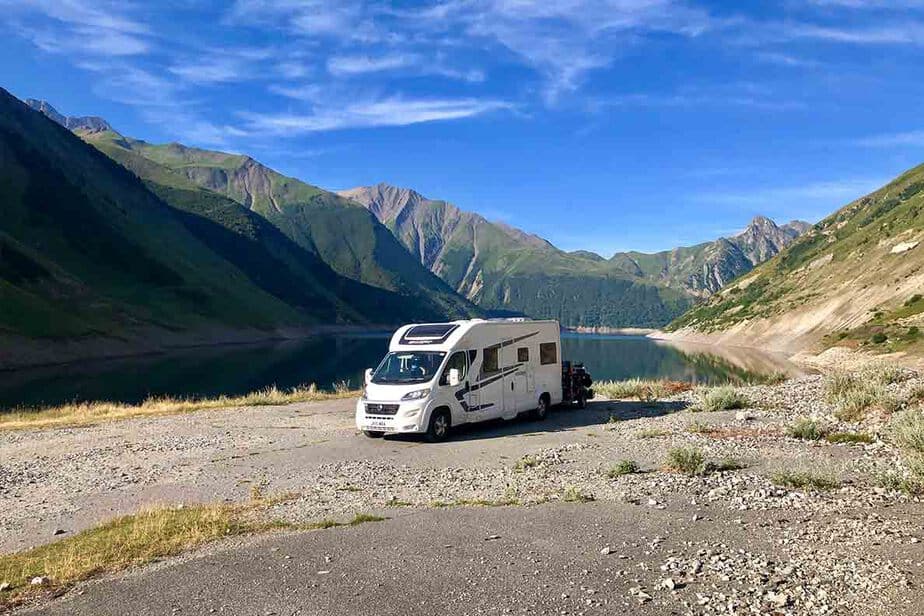
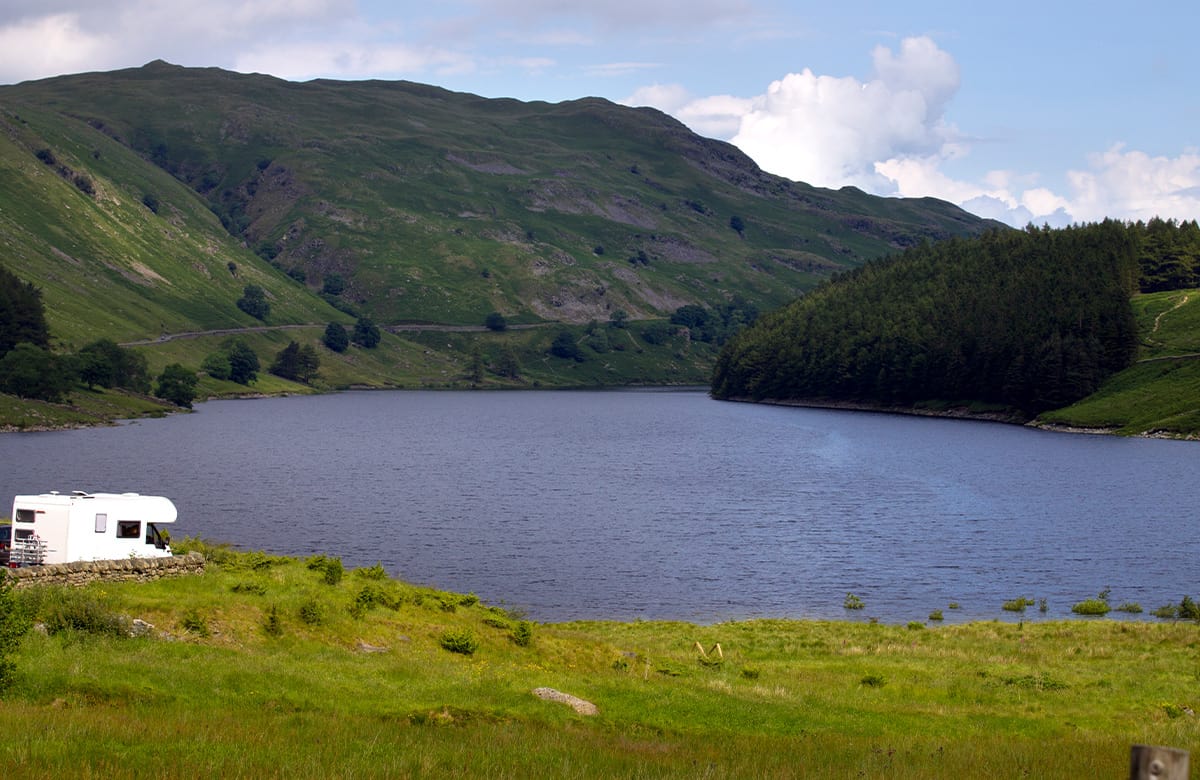
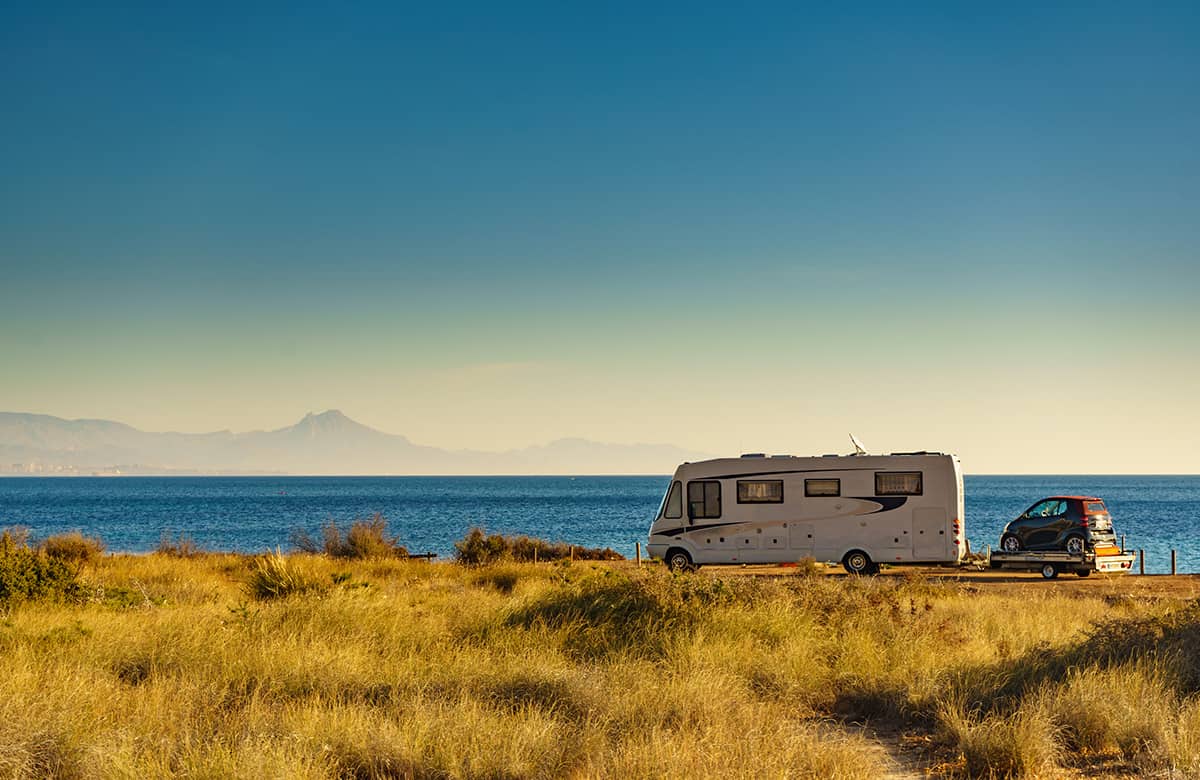
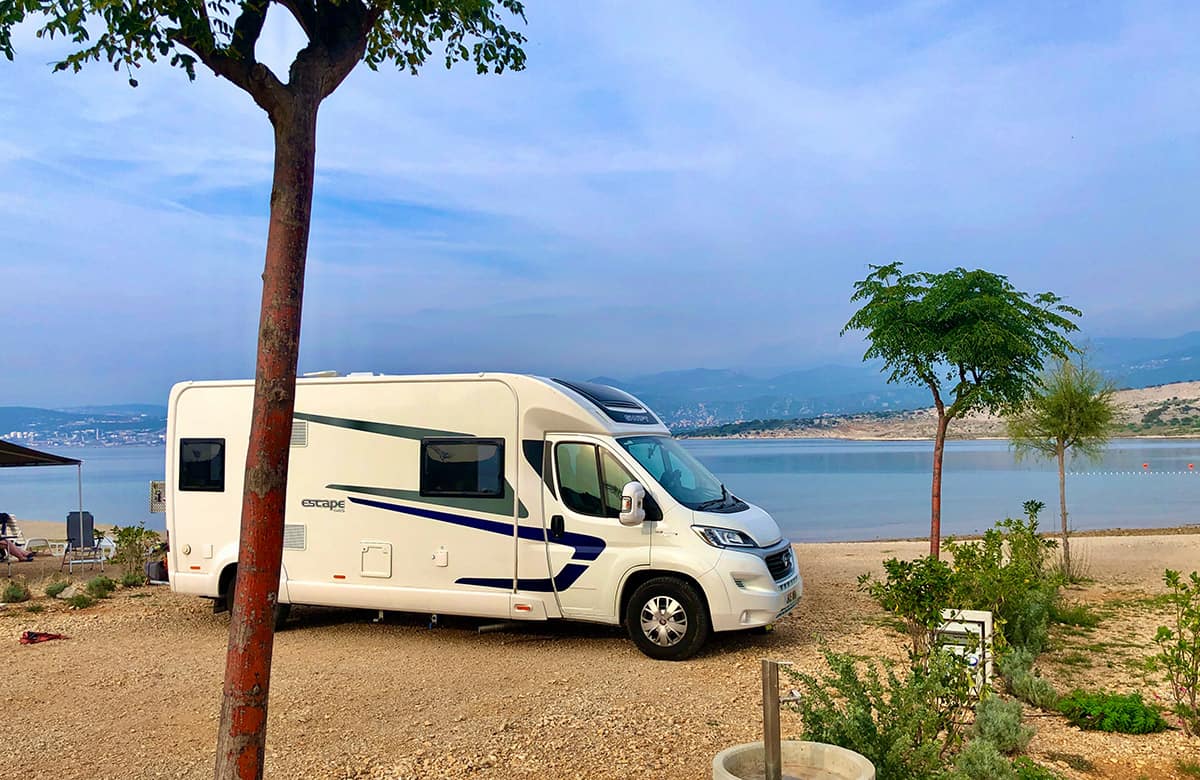
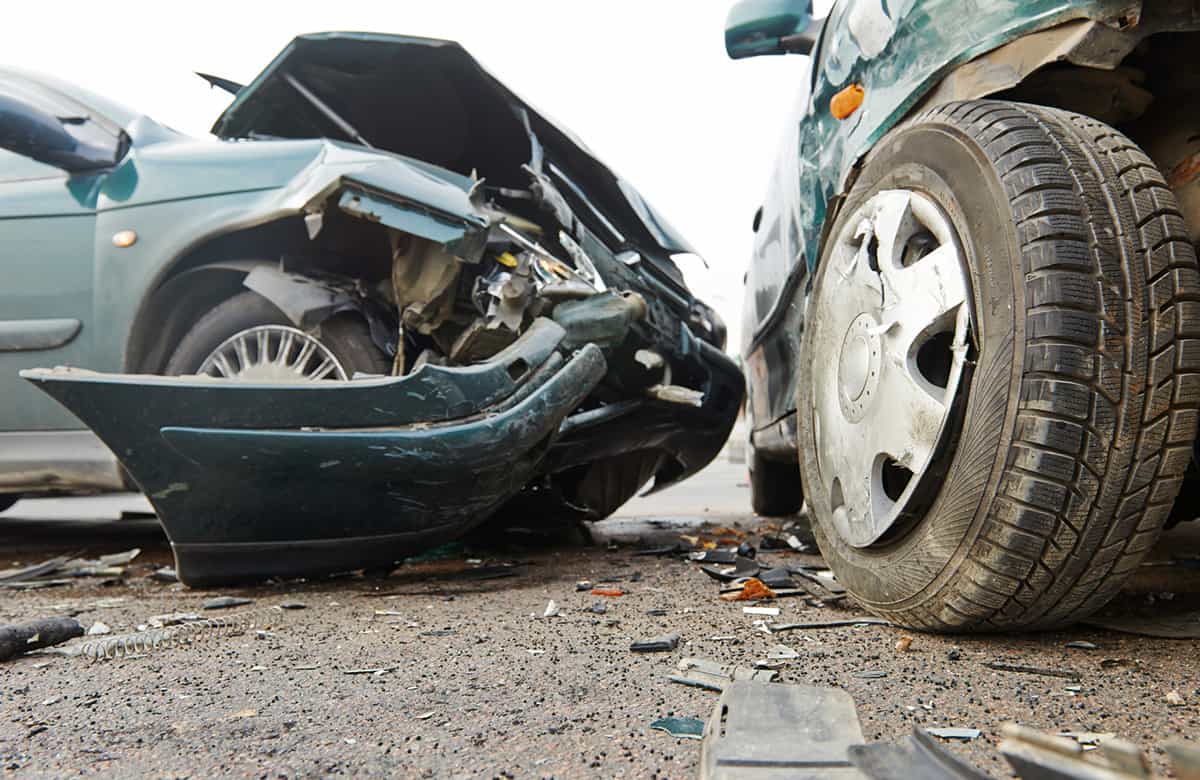
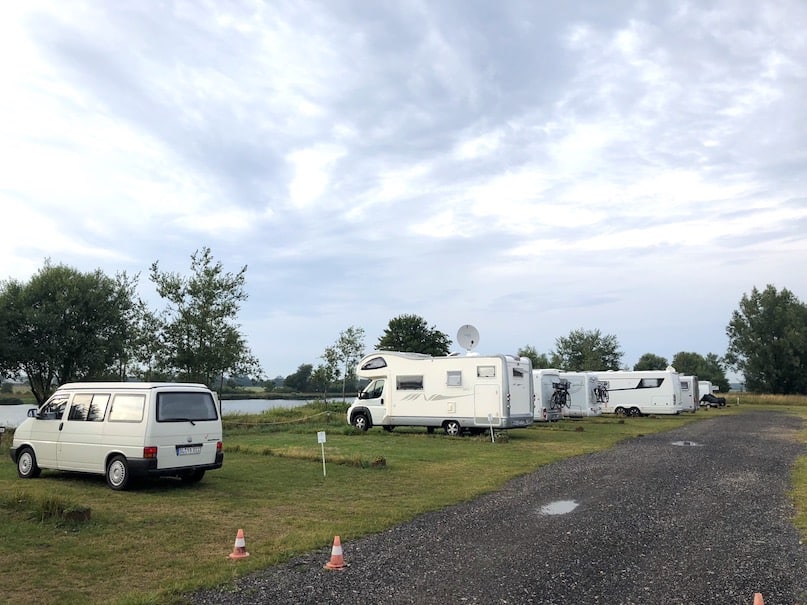
I love this article and all information about driving in the rain tips that necessary to know for everyone who is driving in every season. Keep on writing such a wonderfully informative post.
Good info. Pretty much common sense for most of them. High winds are riskier in my opinion when in a Motorhome from a normal car. A few were on their sides the other week, lorries too, when I collected ours from the dealer, not a nice first experience driving a motorhome I must say. Got back in one piece driving at 50 kph in 80’s, sure it wasn’t far off two wheels a couple of times, annoyed all the car drivers behind, but they backed off after a few really heavy gusts took me half way across the road. “steer with it or roll” was all that was on my mind
a good tool is a pair of night driving glasses or clip -ons.
Excellent idea!
Nice blog, thank you for discussing this topic. This kind of situation is a great reminder that it is really important to broaden our knowledge and awareness about driving to ensure your safety and everyone on the road.